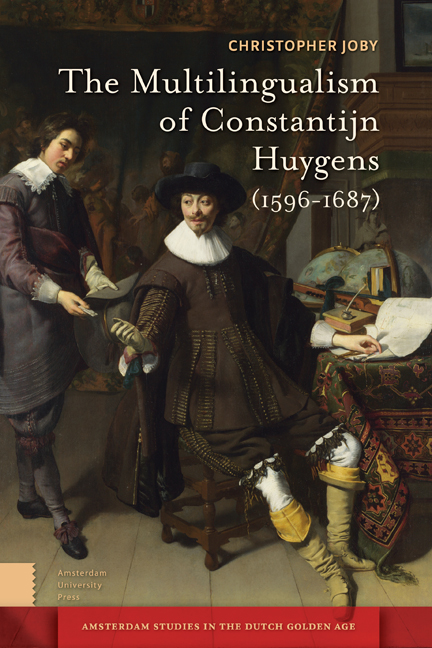Book contents
- Frontmatter
- Dedication
- Contents
- List of Illustrations
- List of Abbreviations
- Acknowledgements
- Prologue
- 1 Multilingualism: An Introduction
- 2 Huygens’s Language Acquisition
- 3 The ‘Multidimensionality’ of Huygens’s Multilingualism
- 4 Huygens’s Multilingualism in Music, Science, and Architecture
- 5 Huygens and Translation
- 6 Code Switching in Huygens’s work
- 7 The Multilingualism of Huygens’s Children
- Epilogue
- Appendix
- Bibliography
- Index
6 - Code Switching in Huygens’s work
Published online by Cambridge University Press: 16 February 2021
- Frontmatter
- Dedication
- Contents
- List of Illustrations
- List of Abbreviations
- Acknowledgements
- Prologue
- 1 Multilingualism: An Introduction
- 2 Huygens’s Language Acquisition
- 3 The ‘Multidimensionality’ of Huygens’s Multilingualism
- 4 Huygens’s Multilingualism in Music, Science, and Architecture
- 5 Huygens and Translation
- 6 Code Switching in Huygens’s work
- 7 The Multilingualism of Huygens’s Children
- Epilogue
- Appendix
- Bibliography
- Index
Summary
It is in code switching that we see the multilingualism of Constantijn Huygens at its most dynamic and creative. In the previous chapter we concluded with a number of examples of groups of poems on the same theme, each written in a different language, which could be described as instances of code switching. In this chapter, consideration will be given to further examples of this phenomenon in Huygens's work, but before this we need to ask what code switching is. Here, though we are in danger of falling at the first hurdle, for scholars have so far failed to produce a common definition. Penelope Gardner-Chloros, using ‘CS’ as the standard abbreviation for the phenomenon, goes so far as to write: ‘it is […] pointless to argue about what CS is, because, to paraphrase Humpty Dumpty, the word CS can mean whatever we want it to mean’ (Gardner-Chloros: 10-11). One can imagine that Huygens might have had some sympathy for such a sentiment, for he would not have used the term ‘code switching’ or a Dutch equivalent to describe what he was doing. Nevertheless, some scholars have tried to produce a definition for the term. One of these is ‘the alternate use of two languages or linguistic varieties within the same utterance or during the same conversation’ (Hoffmann: 110). But for our purposes, this is problematic for a couple of reasons. First, it limits us to only two languages, which in many cases does not suffice for the multilingual Huygens. Second, this definition refers only to spoken language. This brings us to what is perhaps the biggest challenge in writing about Huygens's code switching. Most of the literature on code switching concerns the spoken language, whilst the only evidence that we have of Huygens's code switching is in writing. As James Adams notes in his discussion of Carol Myers-Scotton's study of oral code switching in Kenya (Myers-Scotton 1993), a study of the spoken language alone may only have limited application to the study of the written language, and, furthermore, Myers-Scotton's study only applies to one society and so cannot necessarily be used to account for code switching in general (Adams: 410-13).
- Type
- Chapter
- Information
- The Multilingualism of Constantijn Huygens (1596–1687) , pp. 221 - 272Publisher: Amsterdam University PressPrint publication year: 2014



